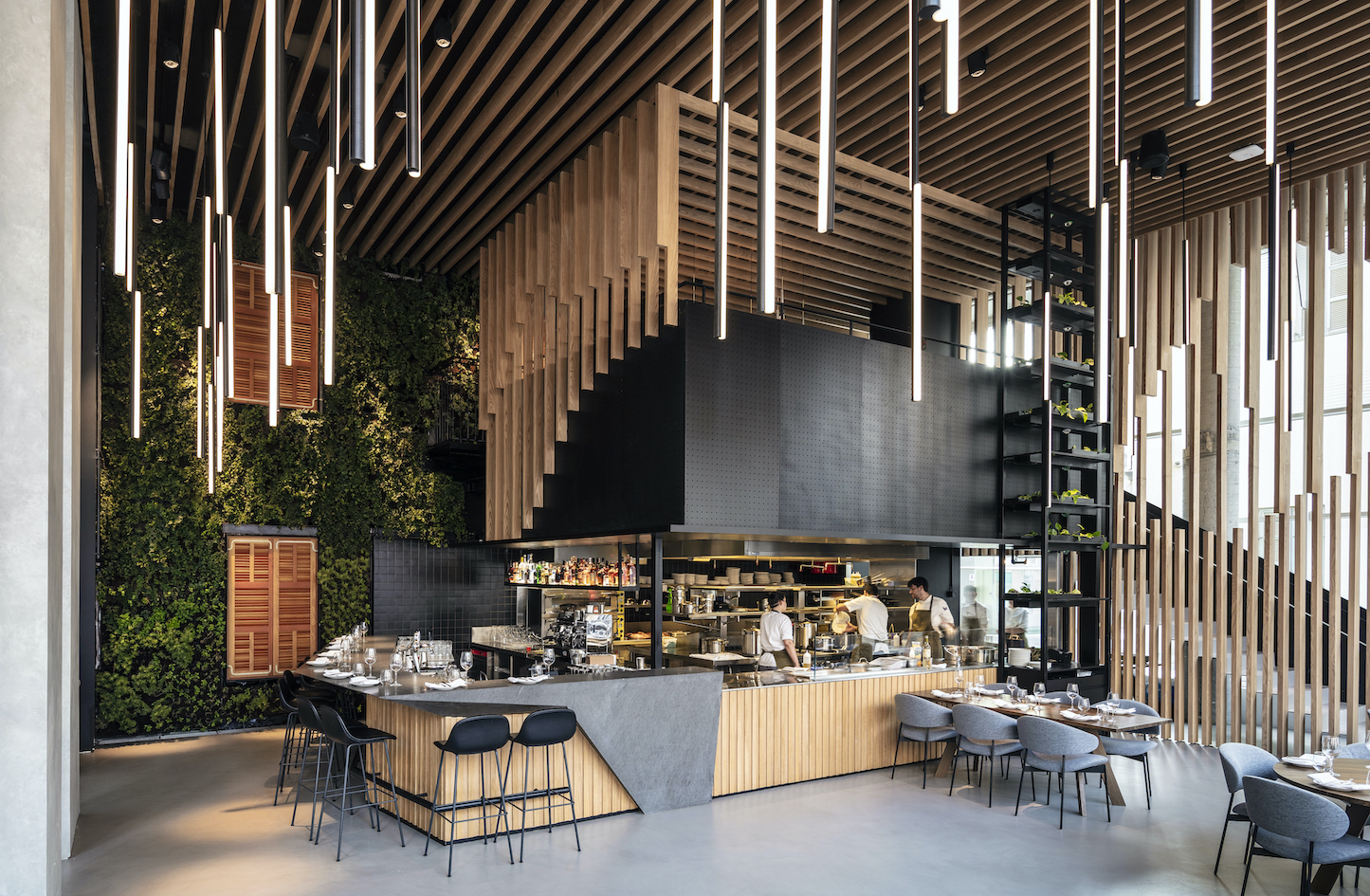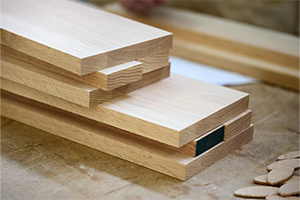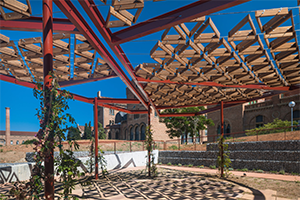AHEC is picking up steam and making headway in India.
How does AHEC promote the mass timber and woodconstruction industry?
Although hardwoods are not the primary material used in mass timber and construction applications, AHEC has been active in testing and developing niche applications for American hardwoods in projects with well-known architects. Examples include multiply with Waugh Thistleton Architects and the Warner Stand at Lord’s Cricket Ground with Populous.

 Why is wood recommended as a preferred building material?
Why is wood recommended as a preferred building material?
When wood from sustainably-managed forests is used, it has probably the lowest environmental impact of any material. Wood is natural, it is replaced, and it has low embodied energy. Using wood from natural, managed forests also increases the value of the forests as a timber source, which helps to prevent the land from being converted to other uses, such as cattle grazing or monoculture plantations. Wood is also a natural carbon store.
What are the different wood species that you export to India, and which species are in high demand in the Indian market?
The U.S. hardwood industry exports roughly twenty species, about ten of which are regularly shipped to export markets around the world. In recent years, India has been importing red oak, white oak, ash, maple, cherry, hickory, tulipwood, and western red alder from the United States. In fact, a new record high has been achieved for U.S. hardwood exports to India in 2021 as both the value and volume of hardwood lumber shipped to the country were more than double the previous high set in 2019
 The total value of American hardwood lumber, logs, and veneer exported to India reached USD 12.22 million last year, despite global lumber shortages, uncertainty in freight rates and availability of containers, and generally increasing prices across all species. Overall, exports of both U.S. hardwood lumber and veneer to India were up year�on-year, whilst exports of logs continued their downward spiral, in line with the general shift seen in recent years by Indian buyers towards importing value-added kiln-dried lumber instead of logs.
The total value of American hardwood lumber, logs, and veneer exported to India reached USD 12.22 million last year, despite global lumber shortages, uncertainty in freight rates and availability of containers, and generally increasing prices across all species. Overall, exports of both U.S. hardwood lumber and veneer to India were up year�on-year, whilst exports of logs continued their downward spiral, in line with the general shift seen in recent years by Indian buyers towards importing value-added kiln-dried lumber instead of logs.
What are AHEC's plans in India for developing existing markets and discovering new markets and applications for American hardwoods?
AHEC has a significant number of planned and ongoing projects in India, which are targeted at educating hardwood importers, end-users (furniture and joinery manufacturers) and specifies (architects and interior designers). A recent example of this is a collaborative project with five Indian designer-makers called REMAKE, where we asked them each to remake three of their existing furniture pieces using American hardwoods for the first time. This gave them much needed hands-on experience with U.S. hardwoods. Another example will be our participation (again) in INDIAWOOD this June, where we will have a large stand and bring a number of our U.S.-based exporting companies.
What does the future landscape of the Indian wood industry look like?
In short, very good. The wood sector in India is going through a fairly intense period of modernization, and the organized part of the sector is growing. Demand for wood furniture, joinery, doors, windows, flooring, cladding, and other products is increasing both in India itself and around the world, which is giving the industry the opportunity to expand rapidly and leverage skilled labor and lower-cost manufacturing.
Are American hardwoods accepted by Indian commercial manufacturers?
American hardwoods are gaining acceptance in India. The process is slow but sure, and many manufacturers are only using U.S. hardwoods for the first time now, having been very used to working with teak, sheesham, mango, and acacia, amongst other species.
 Considering the sustained growth of US hardwood exports to India in recent years, Is there a genuine business opportunity for American hardwoods in India?
Considering the sustained growth of US hardwood exports to India in recent years, Is there a genuine business opportunity for American hardwoods in India?
Yes, and it is a long-term one. In fact, India is one of a few significant global markets that remains largely untapped for American hardwoods. It offers a substantial market opportunity, and it is expected that we will see U.S. hardwood exports to India rise significantly in the coming years, as they gain wider acceptance.
Given the substantial potential in India, and despite the significant challenges that the wide - ranging use of American hardwood faces. What opportunities and challenges do you anticipate in the Indian wood industry?
There are challenges, of course. One of the main reasons is that American hardwoods are temperate species and, therefore, they have many different characteristics and end�use applications than tropical hardwoods, such as teak. There will be a long period of adjustment for both the hardwood trade and end-users in India, but this will just be a matter of time and hard work to educate and raise awareness on our part.
How can we combat climate change by increasing the use of wood in building?
We must find low-impact solutions in building and we must move towards using sustainable materials. Wood is one such material, and one of its great benefits is that it sequesters carbon from the atmosphere during growth and then locks that carbon in until such time as it decays or is burned. Therefore, by using wood instead of steel or concrete, for example, we can dramatically reduce the overall carbon footprint of a building.
What are you expecting from INDIAWOOD 2022?
We hope to see a return to the pre-pandemic days when INDIAWOOD was the biggest wood industry show in India and where we were able to meet hundreds of potential and existing buyers and users of American hardwoods. A show like INDIAWOOD is a shop window for our export industry, and it is hoped that the 2022 edition will see significant pent-up demand, driving a large number of high-quality visitors